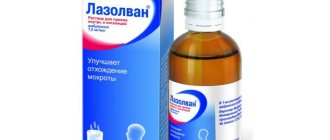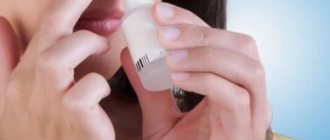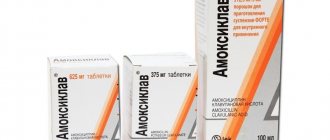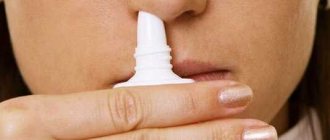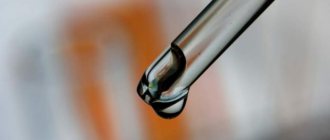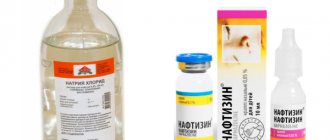Runny nose and lactation
The cause of rhinitis is viruses that cause cold symptoms: fever, cough, pain and swelling of the throat, clear discharge, swelling of the nasal mucosa. Breathing becomes difficult, symptoms of malaise appear.
Nasal mucus is functional. It envelops foreign microorganisms, bringing them out.
Viral etiology can be easily treated at home without harming the body of the mother and child. If an infection occurs, you need to consult a doctor, he will tell you how to treat a runny nose for a nursing mother. Distinctive features of infectious rhinitis:
- the amount released is increased;
- the mucus turns yellow or green.
A nursing mother needs to know the principles of safe treatment for breastfeeding:
- Rest as much as possible and allow the body to recover.
- Reduce contact with the baby. Mother's milk gives immunity to the child, but infection is possible.
- To drink a lot of water. It removes toxins and foreign microorganisms.
- Ventilate the room.
- Regulate room humidity. It should be 50-60%. This will moisturize the mucous membrane of the nasal passages.
- Reduce the temperature above 38 degrees. Ibuprofen and Paracetamol are approved for use. They relieve fever, pain, inflammation without harming the child’s body.
The use of drops, sprays, and inhalations is allowed. Mom should remember that if a child under one year old is infected, spraying sprays into his nose is prohibited. Only drops are used.
Breastfeeding with a runny nose
Many people wonder: is it possible to breastfeed with a runny nose? It does not affect lactation in any way, so feeding must be continued. However, if the cause of rhinitis is a bacterial or viral infection, then take appropriate measures. What to do in this situation:
- Change outer and underwear frequently.
- Maintain a stable temperature in the room, no more than 24 degrees.
- Ventilate the room several times a day.
- Moisture levels are important. It should not be lower than 65% and higher than 75%.
- When in contact with your baby, wear a protective mask.
Click on the image to enlarge its size
It is not recommended to continue breastfeeding if the mother, as prescribed by the doctor, is forced to take antibiotics or hormonal drugs. When treating a runny nose with any other medications, feeding is allowed. It is better to take medications for breastfeeding after the child has eaten. This way, the amount of drugs entering his body will be minimal.
Is it possible to drip breast milk into the nose?
Milk contains lactose, which is a nutrient medium for the proliferation of bacterial microorganisms. If a child has become infected with a virus, instilling milk will increase the number of pathogenic microorganisms and spread them into the nasopharynx. Pus will appear and nasal congestion will intensify.
Important! If a baby is infected, you should not drip milk into the nose; it is safer to use proven nasal drops when breastfeeding, after consulting with your pediatrician.
Signs and causes of rhinitis in nursing
In addition to snot flowing from the nose, there are other symptoms:
- In the first days of the development of the disease, body aches appear.
- Nasal congestion.
- Temperature increase.
- Possible cough.
- Redness of the skin around the nose.
This disease does not appear suddenly. The following reasons can be identified:
- Injury;
- Excessive dryness of indoor air;
- Allergic reaction;
- Infection.
- Recovery after childbirth.
During the postpartum period, the woman’s body recovers, and various deviations arise that are temporary. For example, neuralgic pain, runny nose, hemorrhoids, headache. If these symptoms do not resolve within a few weeks, consult a qualified healthcare professional.
Use of antibiotics during lactation
For ordinary rhinitis, antibacterial agents are not indicated. In this case, antiviral drugs and folk remedies are used. If the form is advanced and infection is attached, you need to consult a therapist. He will select a safe drug.
The infection, having accumulated in sufficient quantities, spreads to the sinuses. Inflammation, swelling occurs there, and sinusitis begins. Snot with purulent contents is discharged from the nose. They turn yellow or green. Sinusitis is treated only with antibiotics.
During antibiotic therapy, breastfeeding is temporarily stopped. At this moment, the woman should express with a breast pump and feed the baby with formula. When treatment is completed, breastfeeding is resumed. Local medications penetrate into the blood several times less than tablet and injectable forms. Only the mother can decide whether to stop breastfeeding or not.
When artificially expressing and feeding with formula, the amount of mother's milk decreases, since the breast pump does not repeat the natural sucking movements of the baby.
Antibacterial drugs that are the safest for hepatitis B:
- Penicillins (Oxycillin, Ammoxicillin, Ticarcillin). Can be used by lactating women and infants (if they are infected). Less than one percent of the product penetrates into milk. In 10% of children it causes side effects such as allergies and dyspepsia.
- Cephalosporins (Ceftriaxone, Cefepime). Safe for mother and baby. This is a group of new generation drugs with a wide spectrum of action. In some children it causes dysbiosis, a decrease in the amount of vitamin K. Hypovitaminosis leads to a decrease in the absorption of calcium by the bones.
- Macrolides (Azithromycin, Clarithromycin). Powerful drugs used as a last resort. They are prescribed if there is an allergy to previous medications.
Prohibited drugs: Aminoglycosides, Fluoroquinolones, Tetracyclines, Sulfonamides, Lincosamides. Even with low permeability, drugs cause side effects such as nephrotoxicity and hepatotoxicity. In infants, visual acuity and hearing deteriorate. Bone and dental tissue develop poorly. Intestinal function deteriorates, diarrhea, vomiting, and dysbacteriosis occur.
Nasal, eye drops or an injection solution are prescribed for the nose. Another option is to mix crushed tablets or powder with saline solution. Apply one drop of solution into each nostril. The course of treatment lasts at least 5 days. If it is interrupted, a relapse of the infection is possible. The use of probiotics is not necessary; the drops do not reach the intestines and do not penetrate well into the blood.
In order to reduce the amount of the drug that penetrates into the milk, it should be used before feeding. The lactating fluid has already been released into the ducts, the formation of a new one has not begun.
Allowed drops for breastfeeding
To improve well-being, agents are used that reduce swelling, destroy foreign agents, soften and moisturize the mucous membrane. They do not have a toxic effect and do not pass through protective barriers. An otolaryngologist will tell you which nasal drops can be used during lactation.
- Vasoconstrictors. Allowed: Naphthyzin, Nazivin. Relieves swelling and improves nasal breathing. This is especially important during sleep. Possible adverse reactions in children: increased blood pressure, vascular hypertonicity, arrhythmias. Rarely, Naphthyzin reduces the amount of lactated fluid, so Nazivin is more often used during breastfeeding. The drugs are used for no more than 7 days to avoid addiction. Xylometazoline, Vibrocil and Tizin are not recommended during breastfeeding. In large quantities, they cause muscle spasms, seizures and cardiac dysfunction. Tizin is prescribed one drop in each nostril only if you are allergic to other medications. Before going to the doctor, a woman may experience severe swelling of the nose. One-time instillation of the nasal passages is possible without the permission of a specialist. Before doing this, you must read the instructions.
- Antimicrobial drugs. Pinosol reduces the number of foreign microorganisms and moisturizes the mucous membrane. It is a herbal medicine, so it should be used with caution if the mother or child has allergies. Furacilin can be instilled into the nose; it has no side effects and is approved for use by newborns. The negative effect is that it dries out the mucous membrane, so it is used in combination with saline solutions.
- Moisturizing medications. When the snot dries, crusts form in the nasopharynx. To prevent their formation, it is necessary to moisturize the nasal passage. Use saline solutions (Aquamaris, Aqualor). Additionally, they thin out secretions. Therefore, mom can easily blow her nose. This is taken into account in the presence of thick green discharge, which makes it difficult to blow your nose. Prepare your own saline solution at home: dilute a teaspoon of salt in a glass of boiled water.
- Local anti-allergy medications. Medicines in this group contain hormones. They are contraindicated during lactation, even topically. Cromohexal and Cromoglin are allowed. They are natural preparations containing plant components. Relieves allergic swelling with systematic use.
- Immunostimulants. System tools are prohibited. Interferon and Derinat are allowed, increasing local immunity.
- Folk remedies. For an antibacterial effect, instill the nose with a solution of slaked soda. Vegetable oils (eucalyptus, menthol) can be smeared on the nasal mucosa or used through inhalation. To relieve swelling, gauze with salt and moistened with water is placed on the nasal septum. The use of garlic is prohibited. Cut the onion into cubes and infuse, the finished infusion is smeared under the nose and inside it.
How to treat?
Treatment of a runny nose during breastfeeding is carried out in compliance with a certain regimen. It means:
- drinking plenty of fluids. Mommy should drink at least two liters a day. This can be fruit drink, warm tea, milk, still water, compote or herbal infusions. Adequate fluid intake into the body allows you to accelerate the elimination of toxins, normalize temperature and replenish fluid losses through sweat and breathing;
- bed rest. It allows the body to regain strength and cope with the disease more easily without complications;
- regular ventilation and wet cleaning, which reduces the concentration of infectious pathogens in the air and provides good conditions for the woman. The air importance should not be less than 60%, especially during the heating season;
- healthy eating. Eat more fresh vegetables, fruits and herbs. You need to limit the consumption of fatty, spicy, fried foods, light carbohydrates, flour products and products with trans fats and dyes;
- lack of contact with allergens. Rhinorrhea will continue until the influence of the provoking factor ceases;
- absence of hypothermia, exposure to drafts and contact with sick people.
Breastfeeding provides the baby with protective antibodies to build its own immunity and provide strong protection against infections.
Regular feeding allows you to avoid lactostasis and the development of mastitis.
Preventive measures
These techniques will protect the mother and newborn from the threat of viruses and infections and their spread throughout the body.
- Hardening: visiting a pool or sauna, walking barefoot at home, swimming in cool water. Dress according to the weather, do not over-insulate. This will strengthen the immune system and help it cope with foreign agents.
- After giving birth, mothers are not recommended to visit crowded places. This is fraught with infection of viruses and bacteria not only by the mother, but also by the child.
- Avoid hypothermia. This is dangerous due to infection with viral rhinitis, ARVI and influenza.
- If her husband or other relative becomes ill, the mother must reduce contact with the infected person and wear a mask. It must be changed every three hours, because it becomes saturated with exhaled bacteria and causes harm.
A nursing mother should know that the immune system copes with viral rhinitis. The use of serious drugs in this case is contraindicated for people of any age. The use of antibiotics without a reason is fraught with the risk of microorganisms becoming accustomed to them.
